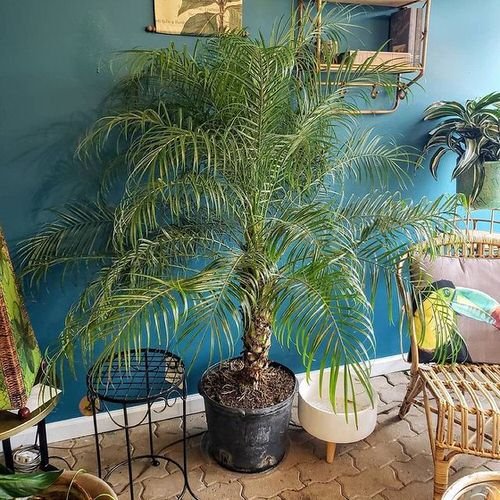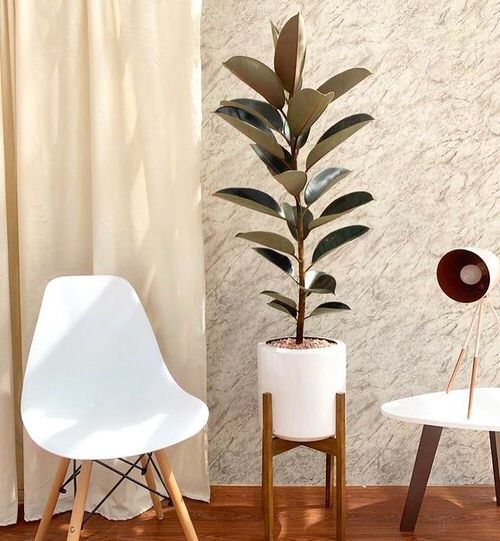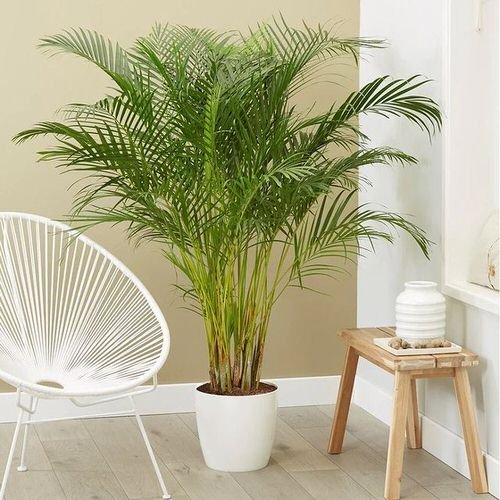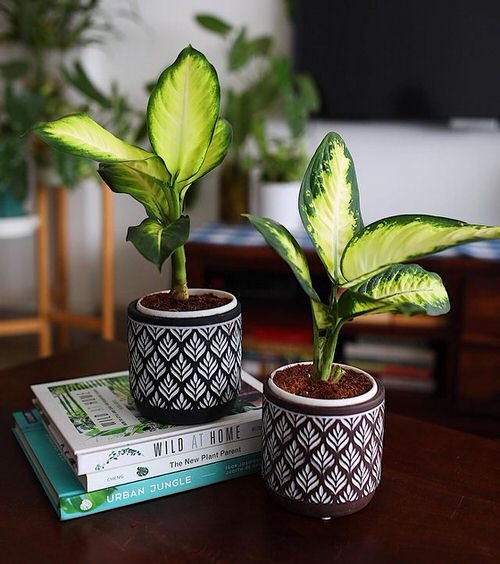Do you know about the Houseplants that Reduce Dust and Particulate Matter from rooms? Growing them indoors will help in keeping indoor air clean!
Having greenery indoors is the best way to relieve stress and keep the air clean and healthy, this is why you should grow Houseplants that Reduce Dust and Particulate Matter.
Check out the best plants that reduce eye strain here
What is Particulate Matter (PM)
Particulate matter, PM, or particle pollution refers to a combination of solid particles and liquid droplets found in the air. Some examples are dirt, dust, smoke, and soot that can be seen with naked eyes. Long exposure to these particles can cause breathing and lung issues in the long run.
What Type of Houseplants Reduce Dust?
Houseplants with large, shiny, and waxy foliage, provide extensive surface area to attract and capture dust. Just like outdoors, indoor plants trap these dust particles through an unambiguous process and release fresh air. Some of the best ones for this purpose are Hoyas, philodendrons, anthuriums, water lilies, etc.
What Type of Houseplants Reduce Dust and Particulate Matter?
According to this study, foliage with a greater amount of pubescence and rough surface accumulate a higher amount of particulate matter. You can grow plants like fiddle leaf fig, snake plant, mums, purple smoke tree, purple fountain grass, and croton.
Houseplants that Reduce Dust and Particulate Matter
1. Pygmy Date Palm

Botanical Name: Phoenix roebelenii
According to this study, this palm is quite potent in promoting a healing effect and purifying indoor air. Pygmy Date Palm is also very effective in absorbing formaldehyde, toluene, xylene, and styrene, which cause sick house syndrome.
The purification capability changes with light intensity and becomes more effective when the room temperature and humidity are both on the higher side.
Here are the best low light palms you can grow indoors
2. Rubber Plant

Botanical Name: Ficus elastica
The large waxy foliage of rubber plants absorbs indoor air pollutants efficiently. According to NASA Clean Air Study, some houseplants clear pollutants from the air, and rubber plant is one of them.
As the leaves of the rubber plants are quite large and have a waxy, shiny surface, the foliage is effective in trapping indoor dust particles and particulate matter. To make it more effective, you can mist the plant once a day as it will increase its efficiency to stick dust particles to its foliage.
Check out more rubber plant benefits here
3. Ivy

Botanical Name: Ivy
All ivy varieties are efficient in removing the dust – for instance, the most popular air-purifying plant, English ivy, not only looks great but also removes VOCs toluene, octane, benzene, and trichloroethylene. Grow ivy plant in a hanging planter to improve the air quality you breathe.
Here are the best Ivies you can grow
4. Spider Plant

Botanical Name: Chlorophytum comosum
Spider plants are highly effective in removing air pollutants! According to this National Wildlife Federation article, spider plants can clean more than 95 percent of toxic agents from the air.
It is most effective in removing carbon monoxide, formaldehyde, Xylene, and toluene. Spider plants can also absorb nitrogen dioxide effectively.
Read about more spider plant benefits here
5. Peace Lily

Botanical Name: Spathiphyllum
According to this study, certain VOCs were captured from the indoor air of participants’ households and then quantitatively analyzed for formaldehyde and BTEX at the analytical laboratory of the Medical College in Yonsei University.
Peace lily was successful in decreasing the indoor concentrations from 2.24 to 1.61 μg/m3 for benzene, from 62.02 to 19.27 μg/m3 for toluene, from 1.56 to 0.27 μg/m3 for ethylbenzene, and from 2.52 to 0.20 μg/ m3 for xylene in a controlled environment.
The plant can absorb mold spores and other air pollutants through its shiny foliage. Peace lilies are also quite potent in absorbing the harmful acetone vapors, exposure to which can cause slurred speech, headache, lack of coordination, lethargy, and low blood pressure.
Keep peace lily in large pots in the living room for an amazing display.
Check out the peace lily benefits here
6. ZZ Plant

Botanical Name: Zamioculcas zamiifolia
This low-maintenance houseplant with dark green leaves helps in cleaning indoor air by absorbing harmful air pollutants from the surroundings. It is also very easy to maintain and looks great in small pots!
The small waxy and shiny leaves of the plant are quite effective in trapping the airborne dust and particulate matter. Keep it in the bedroom and mist the foliage once a day to see the best results!
Check the proven ZZ plant benefits here
7. Bamboo and Areca Palm

Botanical Name: Chamaedorea seifrizii and Dypsis lutescens
You can reduce dust and particulate matter in your home by growing 2 plants in 50 square feet area. According to a study at Paharpur Business Center and Software Technology Incubator Park, New Delhi, it was found that indoor plants like bamboo, Rhapis palm, Areca palm, and ficus Alii can absorb harmful gases, VOCs, and CO2 from the air.
Have a look at the house plants with the weirdest leaves here!
8. Pothos

Botanical Name: Epipremnum aureum
The shiny foliage of pothos is not just great when it comes to trapping dust, but it is also one of the most potent plants to absorb the harmful VOCs and toxins from indoor air.
According to the clean air study by NASA, this plant eliminates pollutants such as benzene, toluene, formaldehyde, carbon monoxide, and xylene from the air.
9. Dumb Cane

Botanical Name: Dieffenbachia
Dumb canes look stunning with their large and variegated foliage that also helps to absorb VOCs like acetone, benzene, formaldehyde, and toluene inside the home.
According to a recent study, indoor air can be as polluted as outdoor air and can cause headaches, dizziness, nausea, and allergies. Growing dieffenbachia indoors is a good option to trap dust.
Some Other Houseplants You Can Grow that Reduce Dust
Aloe vera, Chinese Evergreen, Betel Leaf Plant, Ferns, Philodendron, Fittonia, Gerbera daisy, and Pot mum, are also some of the great choices to keep dust away.



My plants end up dying in the house. I don’t know what I am doing wrong.
I have the same problem. Every plant I’ve ever had has died. Lol. So I finally gave up. I’ve recently started growing a vegetable garden in grow bags on my deck. Started about 3 years ago. I’ve been relatively successful with that, although there are still a few issues in working on. I’ve had no success with root vegetables. At all!